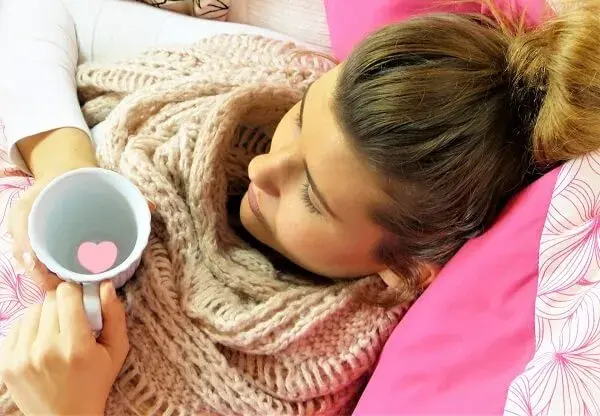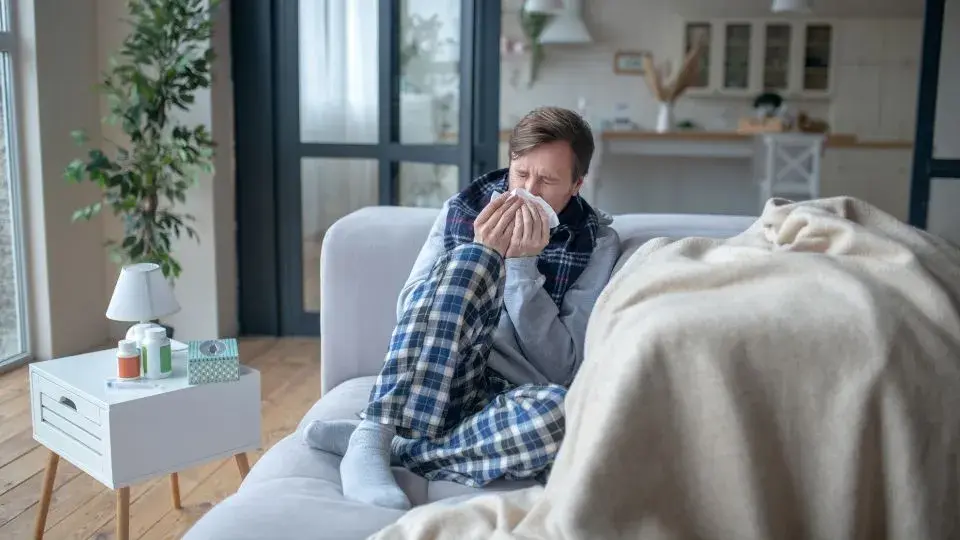Absenteeism in the workplace has been a particular challenge for companies in the last two years. The Covid-19 pandemic prompted workers - many who battled ailments that in previous years would have been considered relatively minor - to err on the side of caution, choosing to work from home where possible.
For those where remote working wasn’t possible, and often with consideration for others in mind, sick days were taken.
In the first half of 2022, a record number of sick leave days were taken by European workers. Respiratory illnesses such as influenza, colds and Covid were often the main cause.
Reduce absenteeism in the long run
s we emerge from the Covid-impacted years of 2021 and 2022, our knowledge of the virus has grown. In Ireland, as in the rest of Europe, we have developed various strategies to prevent and combat a re-emergence of the virus. Staff and employers are beginning to embrace something close to normality again with the aim to reduce absenteeism in the long term.
In this blog, we identify several key areas where employers can improve attendance levels in the workplace.
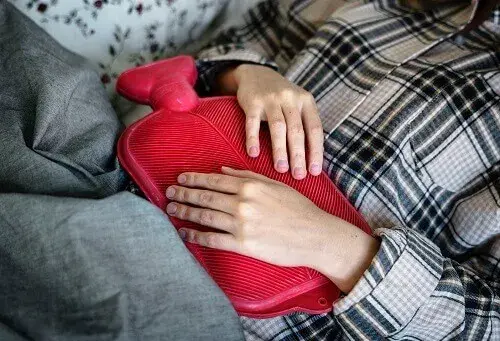
The Underlying Cost of a Sick Employee
In financial terms, a sick employee can cost the employer double their daily salary. Not only must a salary continue to be paid, but temporary staff may be recruited to cover gaps in the workforce. Alternatively, existing personnel may be tasked to provide cover and this has a wide-reaching impact on overall team output.
A reasonable estimate of the cost of this in Europe is about 2.5% of GDP.
Average sick leave
The average number of days taken for sick leave varies across organisation size, job status (part-time or full-time) and whether paid sick leave is applicable. For example, in 2021 22.3% of full-time staff in large organisations (100 people or more) took paid sick leave. By contrast, those in smaller organisations of less than 20 people took 16% (full-time) and 8.2% (part-time) respectively. (data available at CSO.ie)
On 20 July 2022, the Sick Leave Act became law in Ireland. From 1 January 2023, workers will have a statutory right to paid sick leave for up to 3 sick days per year. This will increase to 5 days in 2024 and 7 days in 2025. Some larger employers provide sick pay which can exceed these daily numbers.
In 2018, sick leave in the public service sector was estimated to have cost the economy over €380 million with the average number of working days lost equal to 9.2 for full-time workers.
Self Autonomy - Managing Personal Hygiene Risk
The importance of good workplace hygiene is often underestimated. An employee who is sick is advised to stay at home. Their symptoms may appear or peak several days after they have become infectious. In the instance of Covid, the track and trace application was utilised to inform others of close proximity to an infectious person. Such alerts mitigate the risk of carrying viral loads and reduce the likelihood of transmission.
Prevention is usually better than cure when it comes to respiratory infections.
Practising good hand hygiene is the most effective way to prevent flu and many other respiratory infections. Winter brings its own seasonal viruses, and we are encouraged to be more thorough in both washing and drying our hands effectively.
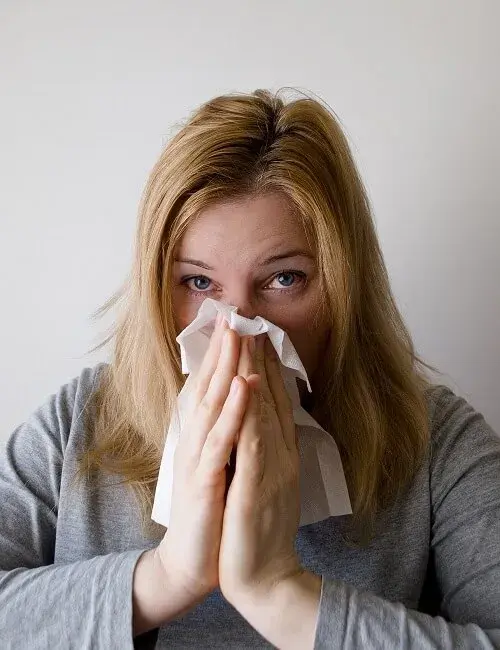
Hand Hygiene Facts
1. Washing hands with soap and water could reduce deaths from diarrheal disease by up to 50%.
2. A large percentage of foodborne outbreaks are spread by contaminated hands.
3. Researchers estimate that if everyone routinely washed their hands, 1 million deaths per year could be prevented.
4. Handwashing can reduce the risk of respiratory illnesses, like colds and flu, in the general population by 16-21%
Ziekteverzuim verlagen met hygiëne
The Importance of Good Hand Hygiene Etiquette
Staff come into contact with bacteria and viruses throughout the day. Often, this could start on their daily commute to work such as on public transportation. The dangers can also lurk closer to the workplace, for example on stair railings and door handles.
During the workday, employees regularly visit the bathroom. After visiting the toilet, there are about 200 million bacteria on your hands if not washed and dried correctly.
Preventing infection
Unwashed hands can lead to people touching their nose, eyes or mouth. Bacteria and viruses have the opportunity to enter the body leading to infection, which results in colds, flu or Covid.
Washing hands with soap or an alcohol-based hand sanitiser is important. An often overlooked area of good hygiene etiquette is drying hands. Wet hands spread a thousand times more bacteria compared to dry hands.
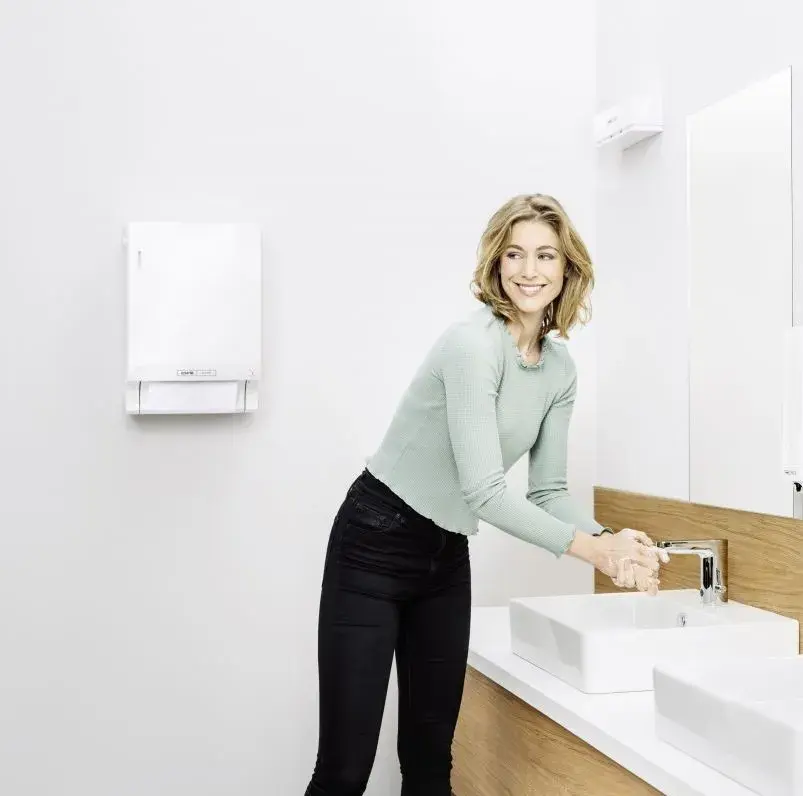
Eight facts about bacteria in the workplace
1. Bacteria can survive as much as 48 hours on a surface.
2. 47% of illnesses can be prevented by washing hands.
3. The computer mouse contains an average of 10,000 organisms per square centimeter.
4. If one hand is contaminated with bacteria, these bacteria can be spread to 14 other employees and 5 new objects.
5. An office employee comes into contact with more than 10 million bacteria every day.
6. A hot air hand dryer results in an increase in bacteria rather than a decrease.
7. Soap pumps are full of bacteria. A solution to this is a (non-touch) dispenser.
8. A soap dispenser with a sensor eliminates the need for contact between object and hand. This, of course, also applies to a sensor faucet.
Typical Infection Routes in the Workplace
Direct contact
One possible vector of infection is through direct contact: coughing, sneezing, talking or touching someone in close proximity. This involves the direct transmission of bacteria. This can be reduced by observing social distancing, keeping a two-metre distance from the person.
Indirect contact
It is also possible to transmit bacteria indirectly. This happens through a variety of objects touched during the day. Some examples of indirect sources of contamination in the workplace are:
- Kitchen taps
- Door handles
- Keyboard and mouse
- Coffee machine
- Lift buttons
- Stair handrails
These objects are used and touched regularly during a workday.In many cases, hands are not washed afterwards and bacteria is easily spread.

Tackling Germs, Bacteria and Infection Effectively
Despite our best efforts, sickness, germs and bacteria can still prevail. Even the most diligent and carefully followed practices will lower rather than eliminate outside threats to our health. This much is evident in the controlled environments or ‘bubbles’ that people constructed during the Covid-19 pandemic.
Despite following many of the HSE recommended guidelines - hand washing/drying, social distancing, sneezing and coughing into elbows and limiting social gatherings - many people still succumbed to some form of respiratory illness during the year.
The best we can do is manage activities that are within our control to improve the likelihood of staying healthy. This means that we will not be an unwitting carrier or transmitter of illness in the workplace.
Improve basic office hygiene
The workplace is not a vacuum. The more staff working in an office on a given day, the greater the spread of germs and bacteria. However, that doesn’t necessarily mean that it should become a breeding ground for illness.
Close adherence to basic hygiene principles will help prevent the spread of infection and ultimately promote a safer, cleaner working environment.
Where professional cleaners are employed, many fundamentals are taken care of - replacing office bins, cleaning surfaces with antibacterial wipes, washing the toilets and washing zones thoroughly, etc.
Several hotspots that often fly under the radar can be located at each person’s desk area. Alcohol disinfection wipes should be used to clean keyboards, mice, laptops and monitor screens. Never assume that cleaning staff will automatically clean these areas - more often than not, the responsibility lies with each staff member to manage their own spaces.
Flexible workplaces
Post-Covid, many employers incorporated a more flexible work model for staff, where a portion of the work week could be conducted from home. Reducing exposure to daily germs on a daily commute can help reduce absenteeism. However, spending more time at home means that the same high standards of cleanliness should be met, lest the origin of any illness could stem from the confines of one's own environment and subsequently be carried into the office.
Where ‘hot desks’ are concerned - a desk assigned on a rota system - it is even more important to clean and sanitise the area to prevent germs unwittingly being passed between workers occupying the same space.
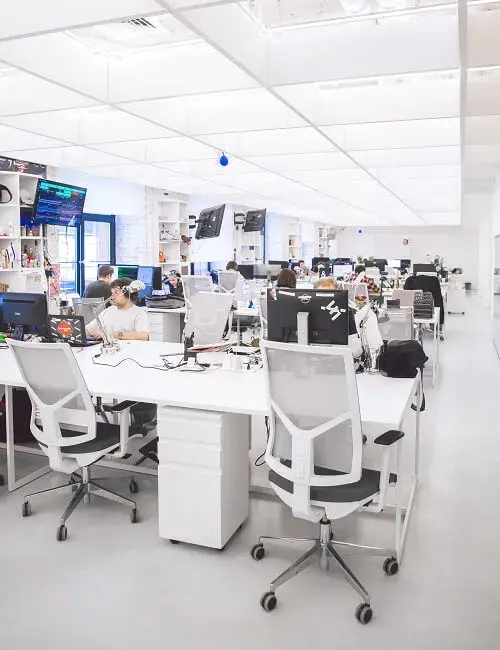
Creating awareness
The first step towards change is awareness. The last two years have taught us the importance of good hygiene and its role in fighting disease and infection.
Many of the earlier Covid messaging - tips that also encourage overall general health - seeped into the public imagination and encouraged a greater responsibility for our actions as it relates to hygiene.
However, as humans, we are fallible and often our own standards can slip or we relax our guard. Promoting good hygiene within the workplace involves consistent messaging, clear instructions and placing an emphasis on how our individual actions can promote a safer and healthier environment for all.
Active approach
Employers need to be attentive to the needs of their staff. Hand sanitizers, fully stocked washroom supplies, regular cleaning and setting a high bar for office etiquette, including a clean desk area, all contribute to making staff feel protected.
Consideration should also be given to immunocompromised members of the team, to make their particular working conditions as comfortable and clean as possible. Seasonal changes also cause bacteria and germs to flourish.
Common colds and flu tend to circulate in the darker, colder months of the year. Ensuring that there are sufficient cleaning supplies and tuning into the needs or concerns of staff must be considered during this timeframe. A health risk to one could lead to a health risk to all. Carefully managing the impact of illness and isolating the problem early is the best strategy to avoid absenteeism.
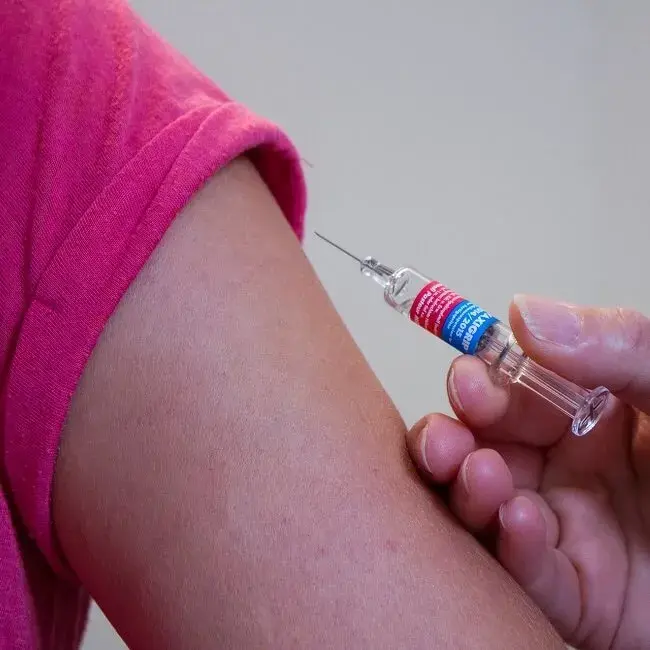
The Bottom Line - Reducing Sick Leave
Tackling infection and illness in the workplace has become even more important following the Covid-19 virus. The virulence of the infection and its transmission in the broader society has demonstrated the importance of quick and effective treatment to mitigate the risk.
There are many lessons to be learned from the previous two years. Taking individual responsibility for one’s hygiene, maintaining and encouraging those high standards of others and having consideration for the plight of the overall team can help mitigate the risk. Adopting a proactive approach can incur some initial challenges and costs, but the cumulative effects of absenteeism can ultimately be a much more expensive lesson for businesses.
